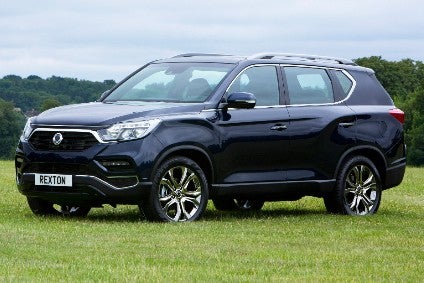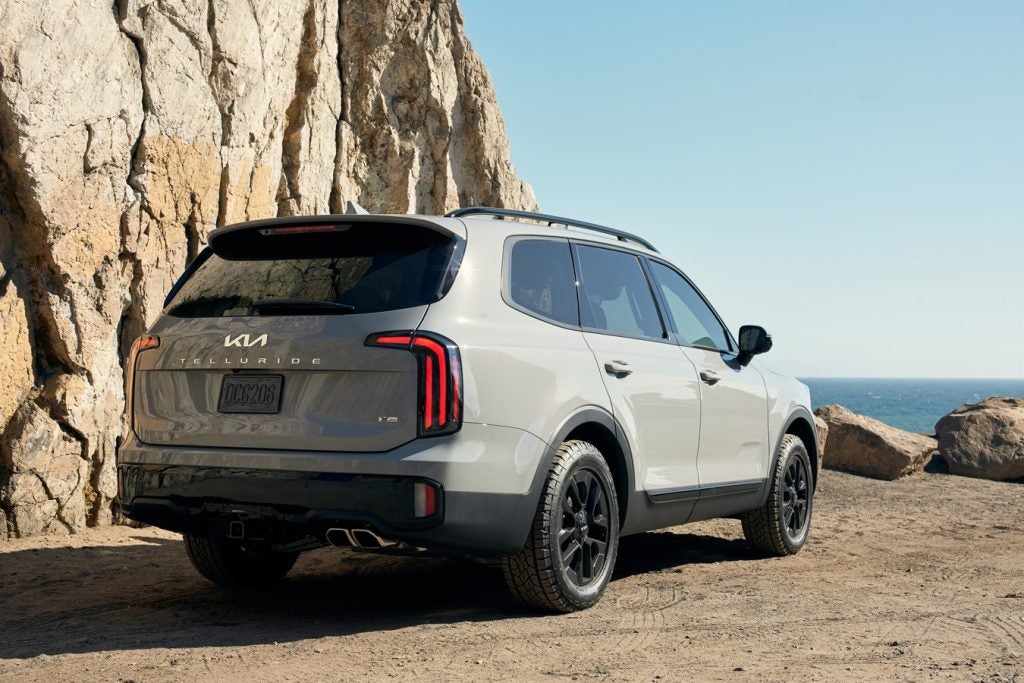
SsangYong likes to be thought of as Korea’s equivalent to Jeep. A long history of building rugged four-wheel drive vehicles can play well to buyers in many countries. Now, following a period of consolidation after the post-bankruptcy years of rebuilding its image, SsangYong is trying a push into premium priced market segments. Can it work?
With Hyundai and Kia offering large SUVs with high pricing, there seems no logical reason why SsangYong shouldn’t also believe that it can do this. After an especially difficult period which saw the brand hit hard by a steep downturn in Russia, formerly a major market, things are looking up. Even though 2019 is only days old, SsangYong is already ahead of its domestic market rivals in revealing a new model: the addition of a lengthened Rexton Sports.
How well do you really know your competitors?
Access the most comprehensive Company Profiles on the market, powered by GlobalData. Save hours of research. Gain competitive edge.

Thank you!
Your download email will arrive shortly
Not ready to buy yet? Download a free sample
We are confident about the unique quality of our Company Profiles. However, we want you to make the most beneficial decision for your business, so we offer a free sample that you can download by submitting the below form
By GlobalDataThe just-launched ‘Khan’, which has a 310mm-longer utility deck, builds on the rising success of what is sold in the UK as the Musso. The extended pick-up’s load bay has 1,262 litres of capacity and can take up to 700kg. The rear suspension retains the standard Rexton Sports’/Musso’s leaf springs but these are adapted with electric assistance to prevent the vehicle from sagging when heavily loaded. The UK importer is not believed to have any intentions to add this derivative, for the time being at least. Not that there won’t be new SsangYongs for this market in 2019; far from it.
Bye bye Turismo (after 15 years) and hello Korando
The next generation Korando will be shown to the press at the Geneva salon in early March, landing in Britain and other European nations from the third quarter. There should also be a mid-cycle update for the Tivoli later in 2019. Another SsangYong will be discontinued though: this is the final year for the Turismo. That’s not a surprise as the big MPV first rolled down the line at SsangYong’s Pyeongtaek factory way back in January 2004.
The Turismo is an extreme example but the brand’s models’ life cycles are often still too long (the Korando dates to 2010). That needs to change. The issue is certainly one that the firm is well aware of, SsangYong management’s official line being that Mahindra’s approach is to invest intelligently and constantly.
Electric SUV due in 2020
Replacing old vehicles while also spending on new powertrains, platforms and electrified technology doesn’t come cheap. Speaking of which, the brand’s first electric vehicle is due in 2020. It will be based on the new Korando so up against the EV versions of the Hyundai Ioniq and Kia Niro. Roughly 12 months after this launch, a model to slot between the C segment Korando and E segment Rexton goes into production.
The principle of one properly new model a year which began with the Tivoli in 2015 remains in place, the Tivoli Air/XLV having been launched in 2016, the Rexton in 2017 and the Actyon Sports/Musso in 2018. The hope is that last year’s global deliveries, which, at 143,309, were flat (143,605 in 2017), will eventually rise above 200,000 and onwards to a quarter of a million in the 2020s. At that point, Pyeongtaek will be hitting its current annual capacity. M&M therefore has no need to expand the plant for a while yet. A new Korando, the EV (codename: E100) and the rival for the Hyundai Santa Fe should in theory make SsangYong decently profitable and lift worldwide deliveries to new heights.
UK sales
Even as 2019 begins, the brand is already in a good place when it comes to the models on offer. In Britain, dealer numbers have risen into the sixties and the network seems to offer a good geographic spread. Sales could certainly stand some improvement, though. In December, SMMT data show that deliveries dropped by 21 per cent and ended the year at 2,754, a fall of 23 per cent. However, the Musso is classed as an LCV so missing from that total. Including it lifts the brand’s sales to 3,239 registrations.
The importer has previously stated that it took a decision to exit certain unprofitable sales practices, the aim now being all about making money rather than creating brand awareness but sustaining losses in the process. The sales numbers also hide the fact that SsangYong has increasing loyalty and crucially, dealers are becoming much better at having the confidence to sell certain models well above the thirty thousand pound mark. It’s even possible, with the addition of a few options, to pay forty thousand pounds for a SsangYong.
Rexton leads the way
I recently put a few hundred miles on a Rexton in Ultimate trim (from GBP38,495) and found it to be a convincing alternative to some big-name and big-price 4x4s. Obviously, having a ladder frame chassis, this is not a direct challenger for most of the E segment’s monocoque platform establishment. There is occasional kick-back through the steering wheel and the turning circle is on the large side but they’re about the only things you would notice to be different to the level of sophistication in, say, a Jeep Grand Cherokee. Even then, there’s not much in it. A lot of the reason is SsangYong’s decision to give the Rexton 10-link independent rear suspension.
Where SsangYong has really come on in leaps and bounds is how it presents its models’ interiors. If the next Korando has the same level of minimalist style as the latest Rexton, then the brand could well start to gain an even stronger following. On the Ultimate model grade, there is the expected wood trim but it’s nicely understated, not at all overly glossy and you could even imagine it gracing the dashboard of the Volvo XC90. Similarly, the quilted leather upholstery is perfectly finished and good looking – the very opposite of what used to be found in SsangYongs.
The 3.5-tonne towing capacity means the Rexton has strong appeal to those with horse trailers and large caravans and even with only 181PS, performance isn’t lacking. That’s because the torque output of the 2.2-litre diesel engine is 420Nm. Base variants come with a six-speed manual transmission but most UK market Rextons have the Mercedes-Benz seven-speed torque converter automatic.
This isn’t the fastest SUV in its size class, top speed being only 115mph and 0-62mph taking 11.9 seconds in top-spec Ultimate form. All the luxury gear also means that weight is 2,233kg and the CO2 figure is 218g/km. Lower-spec variants start at 2,105kg though. The Urban MPG average is 27.1mpg and Combined is 34 exactly, the latter being very close to what the vehicle returned for me.
Seven-year warranty
Once the word gets out that SsangYong UK now offers a seven-year warranty, this brand could well start to become what some of us suspect it has been for while now: the next potential Skoda. Unlike that brand 20 years ago, there is no image baggage to shed in Britain, which is a big advantage. The vehicles are also becoming ever better, which means the main thing holding back SsangYong is the public’s knowledge of its existence. And that’s an infinitely better place to be than trying to convince people to buy second-rate models at bargain-basement prices.
If Mahindra keeps providing the necessary cash to develop new models and SsangYong’s next generation SUVs are as well engineered as the latest Rexton, Korea’s number three brand should stay ahead of Chevrolet and Renault-Samsung at home, and steadily make greater inroads in export markets. Let’s see what the rest of 2019 brings.






